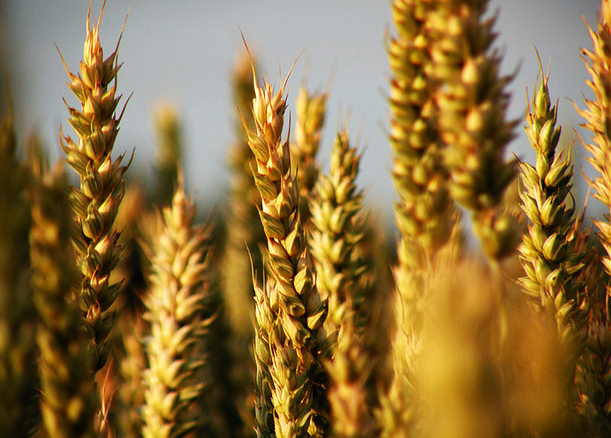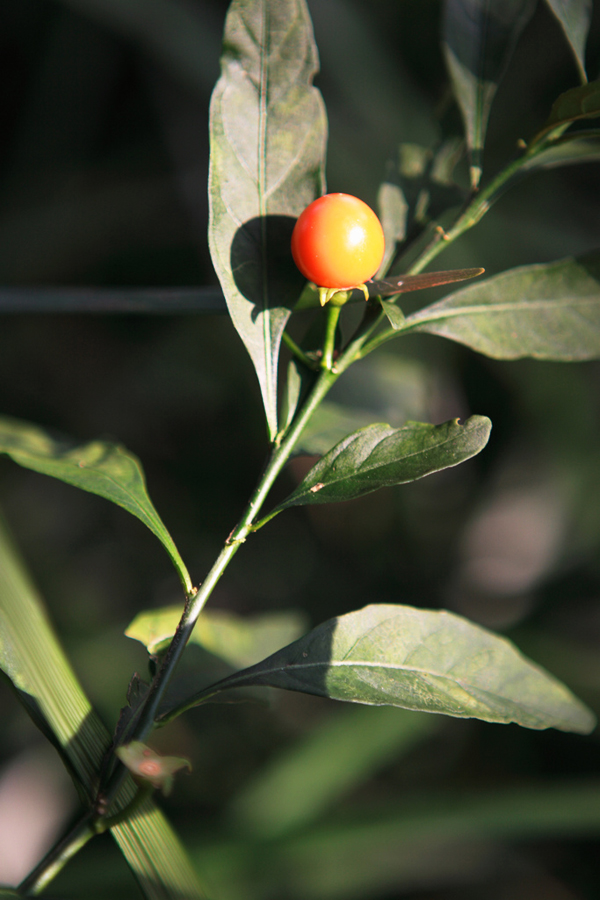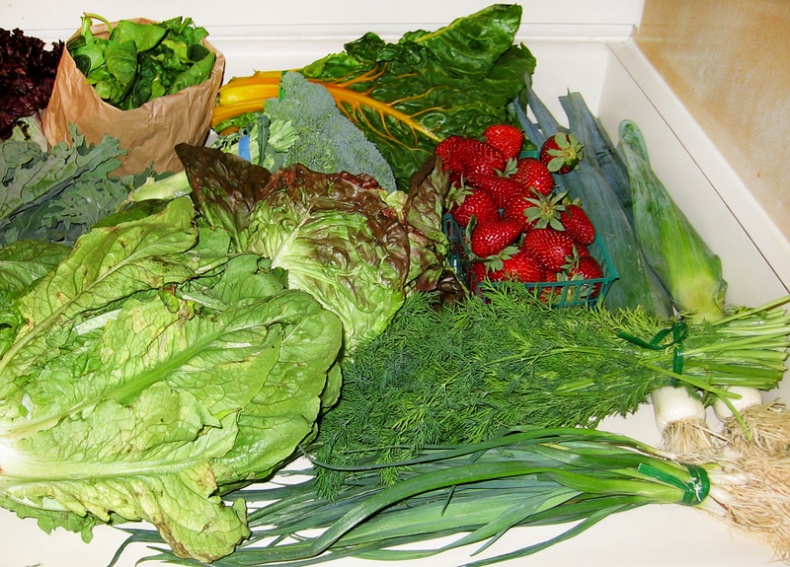
Grain by Frapestaartje
In today's world where there is more bad news than good, it's no wonder that sinister stories about modern agriculture find a very attentive audience. In the past few years, blogs, newspaper articles, and TV shows have been expressing their concerns over the direction modern agriculture is taking. Maurice J. Hladik, disappointed by this fact, decided to write a book to show the world that there is a lot to feel good about in the way modern agriculture is shaping up and that much of the criticism lacks any factual basis.
Who is Maurice J. Hladik?
Maurice J. Hladik, author of Demystifying Food from Farm to Fork, was born and raised on a farm in Central Alberta, so it is no surprise that he chose agriculture as a field of his study. His lifelong love for food and farming led him to earning two degrees in agriculture and devoting a great part of his life and energy to examining a plethora of issues surrounding agricultural industry. He also worked as an agricultural attaché in New Zealand and Germany, and later for a cellulosic ethanol company based in Ottawa, which specializes in converting biomass into ethanol. His background is clearly quite strong. However, his desire to tell people the truth is much stronger. What better way to do it than by writing a book?

Maurice J. Hladik
In 32 chapters, he provides a scientific opinion on food growing and farming. He doesn't always justify farming practices, but he does not agree with all the urban myths about farming either. The book is basically an attempt to tell its readers the objective truth about the path of food from the farm to the consumer.
Demystifying the Myths
Here and there the news presents inspirational stories of people growing food in the most unusual places.
"I still remember a story of a guy who grew lettuce in the saddlebags of a rusted, old bicycle leaning against a garage or in cracks of a path. Sure, that's a great idea. I have always admired ingeniousness of people who are able to grow their own food in the most unusual place. However, this form of farming does not really have any meaningful impact on the nation's overall food supplies."
The book was written using the U.S. as a model, but the difference between the United States and Canada is not so big. In fact, both countries have approximately ten to twenty times more farm land than urban land. While farm land is only used for food production, urban land has a lot of other uses. Based on this factor alone, Mr. Hladik is convinced that there simply is not enough land in cities for them to be self-sufficient in food production.
When it comes to urban food production in Seattle, one of the leaders in urban agriculture and particularly in community gardening, Maurice says, "Even though the amount of work from individuals acting on behalf of their city and communities is tremendous, there does not seem to be enough urban land and perhaps also dedicated gardeners available to make a big difference. The city has 75 community gardens covering approximately 23 acres of land and involving 4,400 gardeners. A typical urban farm produces three tons of food per year from one tenth of an acre of land. Twenty-three acres would therefore bring 690 tons or 1,380,000 pounds of fruit and vegetables per year. With a population of approximately 600,000 this would mean that a single citizen would gain access to only 2.3 pounds of food a year. Since a typical combination of vegetables and fruit represents 200 calories/pound, the community gardens in Seattle would only feed the entire population of the city for about four hours."

Fruit by Mrhayata
The Victory Garden Program is another great example of the effectiveness of urban farming. During the Second World War, the United States Department of Agriculture started a campaign to convert lawns into "victory gardens" to encourage the American public to grow their own food. About 20 million gardens were created with an estimated 9 to 10 million pounds of fruit and vegetables grown a year. While the number is impressive, it is just about three times the annual apple harvest in Washington State alone. In other words, it is about 1.5 pounds of produce per person per week, or enough calories for about three hours every seven days.
Maurice does not forget to mention Peter Ladner, the former mayoral candidate who lost to Vision Vancouver's Gregor Robertson four years ago. "Among his campaign promises, he said that he would make sure that half the food consumed in the city is grown within its borders if elected. Is this possible? Well, to be honest, that is either a very naive idea or just a well thought-out plan to build his candidature on something people would like."
Let's take a look together at a few of the most widespread myths.
- Imagine that you walk into a supermarket. You will most likely find organic products there. Every shop, supermarket, hypermarket, et cetera usually has at least a few shelves of organic foods on offer. One might therefore think that organic farming has a significant share of the market. However, the truth is slightly different. There is less than one per cent of land dedicated to organic agriculture, which is represented by approximately 9,000 certified farmers. In fact, most crops (except pecans, plums, sweet potatoes, and hay) respond negatively to organic practices and therefore show a hit on yields.
- More and more people believe that family farms are slowly but surely disappearing. In fact, the average size of a farm declined from 431 acres in 1997 to 418 acres in 2007, but the percentage of small farms under 100 acres increased to 54.4 per cent from 49.2 per cent. Also, the 2007 U.S. census revealed that the total number of farms remained nearly identical compared with the results of the 1997 census. It is necessary to add that nearly 87 per cent out of the total number is designated as "individual/family farms."
- "Another topic that has always been a subject of controversy (and I believe that this won't change any time soon) is genetic modification." Maurice dedicated a large part of the book to cover the GMO research that was financed by the European Union and took a decade to complete. The project involved more than 400 research groups and cost around EUR 200 million (approximately 380 million CAD). When added all other costs, the European Union spent around EUR 300 million since the inception of the Biomolecular Engineering program in 1982. The result? Genetically modified foods are no different than regular, non-GMO foods.
- You might find it surprising that only 23 farmers out of maybe 25,000 are rejected by 56 different U.S. certification agencies. "When taking into account that organic farmers typically have lower yields and the plants are less resistant to devastation by insects or diseases, I wonder why so few organic farmers have been taken to court and found guilty of cheating. Isn't the temptation big enough to use chemicals and save their crops when they see something bad is going to happen? Well, all organic food has to be certified, but the certifying agencies' sources of revenue are the farmers…"
Organic Food Basket by Ned Raggett
- Are organic foods nutritionally superior? That is the question. The researchers from the London School of Hygiene & Tropical Medicine conducted an extensive research comparing the nutrient content of the foods (Nutritional Quality of Organic Foods: a Systematic Review). Its findings confirmed what some of us had been telling for years. There is no evidence that organically-produced foods are nutritionally superior to conventionally produced foods.
- Let's take a look at another untrue story. According to many, corporate farming is taking over. And the reality? According to the U.S. 1997 census, nearly 87 per cent of farms were owned by individuals or families, while in 2007 the number decreased by insignificant 0.4 per cent. In contrast, the number of farms designated as non-family corporations (farms) increased from 0.4 to 0.5 per cent, which represents about 10,200 farms. What does this mean? Only one farm out of 200 hundred is a corporate one.
- Organic food tastes better. At least some people believe this. "I think this is more about psychology. If you are convinced that organic food tastes better, of course it does. Once, I had about 15 to 20 people at a lecture so I decided to make a simple experiment. We had some carrots, apples, and bananas, both organic and non-organic, and both bought from the same grocery store. When I let my students taste the apples, almost 60 per cent of them said that the organic apples tasted better. With bananas, nobody was able to tell the difference, as they tasted the same, and with carrots, a full hundred per cent of people said that the non-organic carrots tasted better because they looked pretty and fresh. It is therefore possible to say that people's perception of good food is not just about taste. Variables such as the soil, the climate, the methodology when the product is harvested, how it is stored, how it is treated in transport, or how long it was stored determine nutritional value and also apply to flavour."
- Contrary to what most people believe, "organic" does not automatically mean "pesticide-free" or "chemical-free." In fact, under the laws of most states, organic farmers are allowed to use a wide variety of chemical sprays and powders on their crops. For example, there is a chemical called pyrethrin, which is made from chrysanthemum flower, and according to the U.S. poison agency, this is the second most common agriculture chemicals used by farmers as insecticide. It is believed to be the safest of all insecticides, but under some circumstances it can cause numerous health problems to humans. The University of Nebraska conducted a study on chemicals used in both organic and conventional agriculture. The researchers came to the conclusion that conventional agriculture has much greater environmentally and safer chemicals than organic agriculture because the substances used in conventional farming are very specific and they only affect the nervous system of the real pests while leaving other creatures unharmed.
The list of myths about agriculture goes on and on. Hopefully, readers will realize that most of the sinister prophesies circulating about farming and agriculture are as useful as the current myth saying that the world will end on December 21, 2012 at 11:11 UTC when the Mayan calendar finishes.





